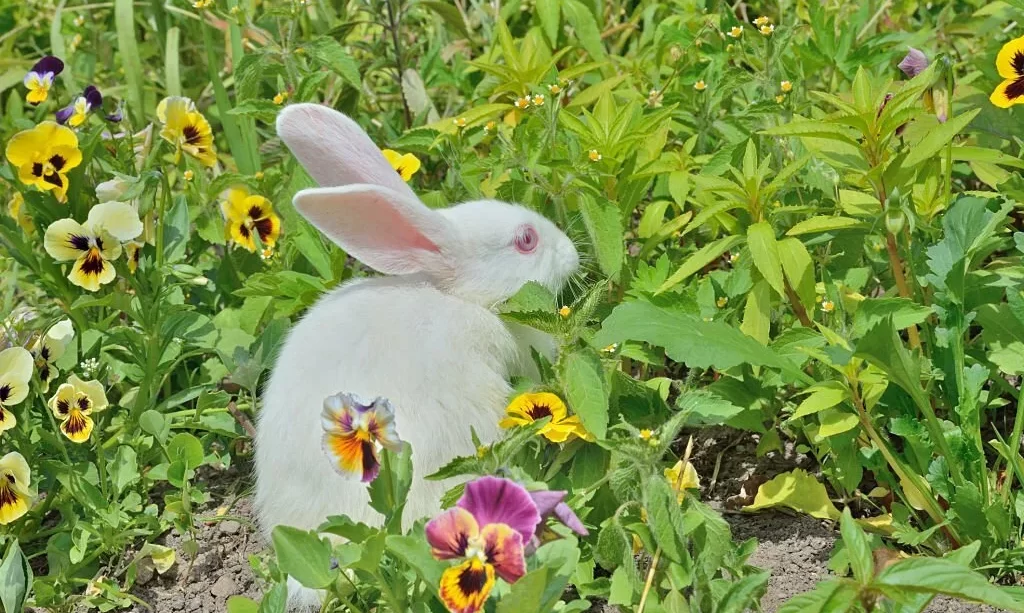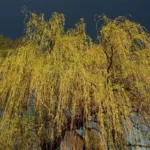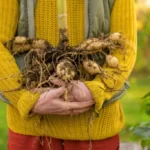Pansies, known for their charming and vibrant blooms, have a special place in the hearts of gardeners and flower enthusiasts. However, in the world of gardening, an intriguing question often arises: Do rabbits eat pansies? The relationship between these delightful flowers and the voracious feeding habits of rabbits is a topic of curiosity and concern for those who cultivate pansies. In this article, we delve into the captivating world of pansies and their potential vulnerability to the appetites of rabbits. Understanding whether these beautiful flowers are on the rabbit menu and the strategies to protect them is essential for maintaining the allure of pansies in gardens and landscapes.
- Planting Depth: 1/16″
- Seed Spacing: 6-8″
- Temperature: 45-65°F
- Days to Germination: 7-21
- Days to Maturity: 80
Pansies: Overview
Pansies, scientifically classified as Viola tricolor var. hortensis, are beloved for their dainty appearance and striking array of colors. These annual or biennial plants are cherished for their resilience in cooler weather and their capacity to thrive in various garden settings. Pansies are renowned for their “faces,” which are created by the arrangement of petals in contrasting colors.
Pansies have earned a prominent place in ornamental gardening due to their captivating aesthetic appeal. They often serve as focal points in flower beds, borders, window boxes, and containers. Their presence in gardens brings a touch of cheerfulness and elegance, making them a popular choice for both novice and experienced gardeners.
As these charming flowers adorn gardens and landscapes, the question of whether they attract the attention of rabbits becomes pertinent. Understanding the dietary preferences of rabbits and their potential impact on pansies is vital for gardeners who wish to maintain the beauty of their flower beds.
Rabbit Feeding Habits
Rabbits, those small mammals with a penchant for nibbling on various plants, possess an herbivorous diet. Their dietary habits are characterized by a preference for fresh vegetation, including grasses, leaves, and the tender shoots of plants. While rabbits are not picky eaters, they do have their dietary favorites. They particularly enjoy consuming the young and tender growth of plants, as these portions are often more palatable and easier to digest.
Rabbits tend to forage in the early morning and late evening, making these crepuscular animals a common sight in gardens during these hours. Their herbivorous nature can bring them into gardens and landscapes where they may encounter a variety of ornamental plants, including pansies.
- Larger, crunchy pieces support dental health through natural chewing activity
- Prebiotics and probiotics to support digestive health
- Naturally preserved for ideal freshness
- Specially formulated for rabbits
Pansies and Rabbits: Dietary Preferences
The interaction between pansies and rabbits is a subject of interest for gardeners, as these vibrant flowers can indeed be on the menu for these small herbivores. The dietary preferences of rabbits make them particularly attracted to the tender, succulent growth of young pansy plants. The lush leaves and colorful petals of pansies can prove irresistible to rabbits, especially during seasons when other food sources may be scarce.
Rabbits’ grazing habits can pose a challenge to gardeners who have invested time and effort in cultivating pansies for their ornamental beauty. The nibbling and browsing by rabbits can not only mar the visual appeal of pansy displays but also hinder the plants’ growth and longevity.
Protecting pansies from the appetites of rabbits often becomes a priority for gardeners who wish to preserve the allure of these flowers. Strategies and preventive measures can be employed to deter rabbits from consuming pansies and ensure that these beloved blooms continue to grace gardens and landscapes.
Protecting Pansies from Rabbits
The protection of pansies from the potentially insatiable appetites of rabbits is a concern for many gardeners. Various strategies and methods can be employed to safeguard these beloved flowers:
- Fencing: Installing physical barriers like wire or mesh fencing around pansy beds can be highly effective in preventing rabbit access. It’s essential to ensure that the fencing extends below the soil’s surface to prevent burrowing.
- Repellents: The use of rabbit repellents, whether in the form of scent-based sprays or taste-based deterrents, can discourage rabbits from approaching pansies.
- Companion Planting: Some gardeners employ companion planting with aromatic herbs or strongly scented flowers to create an environment that rabbits find unappealing.
- Raised Beds: Elevating pansy beds can make them less accessible to rabbits, as these creatures are more comfortable foraging at ground level.
- Nighttime Cover: Covering pansies with mesh or netting at night, when rabbits are most active, can be an effective means of protection.
Conclusion
The interaction between rabbits and pansies underscores the delicate balance between the natural world and the cultivated garden. While these charming flowers may entice the feeding habits of rabbits, gardeners have an array of protective measures at their disposal to ensure that pansies continue to thrive and delight with their vibrant hues.
Understanding the dietary preferences of rabbits and their potential impact on pansies is essential for those who seek to maintain the beauty of these flowers in their gardens and landscapes. The coexistence between gardeners and wildlife, such as rabbits, highlights the intricate dance of nature and cultivation, where protective strategies play a vital role in preserving the allure of pansies in the outdoor spaces we cherish.





